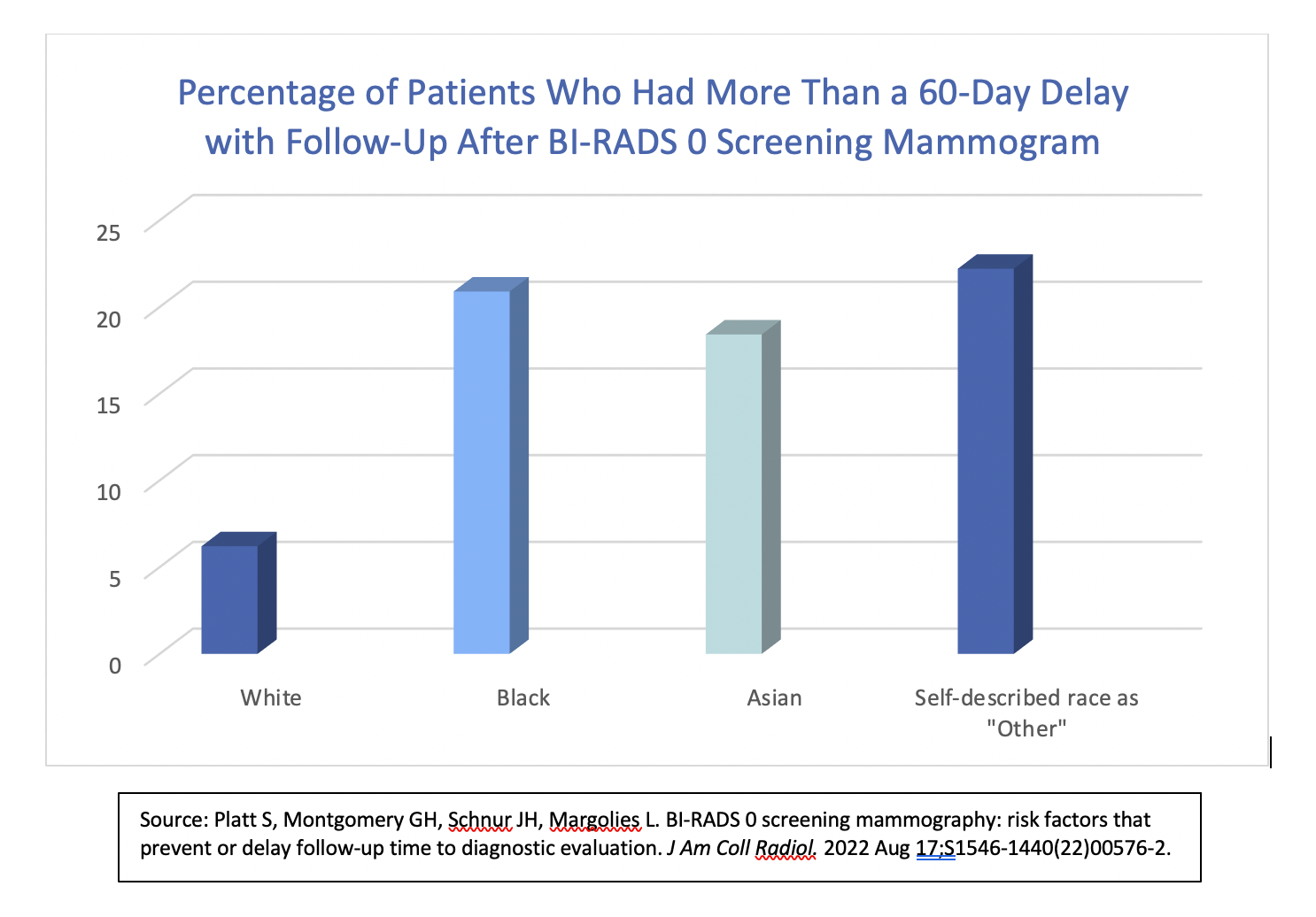Study Finds Disparities with Follow-Up After Incomplete Mammography Exams
Emerging research revealed that Asian patients, Black patients, and those who identified their race as “other” were nearly 1.5 times more likely than White women to have more than two-month delays with follow-up imaging after BI-RADS 0 screening mammography.
A new study looking at follow-up times after BI-RADS 0 screening mammography suggested that disparities with race, ethnicity and foreign language may be associated with significant delays in care.
In the retrospective study, published by the Journal of the American College of Radiology, researchers reviewed self-reported questionnaires and imaging findings of 4,552 women who had a BI-RADS 0 screening mammogram between March 19, 2018, and March 19, 2020. According to the study, 3,648 women (80.1 percent) had a follow-up exam, and 904 women (19.9 percent) had no follow-up exam. For those women who had a follow-up exam in less than 60 days (2,797 women), the researchers found the average time to follow-up was 20.2 days. For the 851 women who had follow-up more than 60 days after the screening mammogram, the study authors pointed out the average time to follow-up was 175.9 days.
In comparison to White women, Black women, Asian women, and those who self-identified their race as “other” were 1.64 times, 1.43 times and 1.45 times more likely, respectively, to have delays of more than 60 days for follow-up exams, according to the study.

“Delays to diagnostic studies, biopsies, oncologic consultation, and medical surgical interventions are cumulative,” wrote Laurie Margolies, M.D., the director of Breast Imaging at Mount Sinai Medical Center in New York City, and colleagues. “Shortening follow-up at each step from screening to diagnosis has important cumulative effects.”
(Editor's note: For related content, see "A Radiologist's Perspective on New Patient-Facing Breast Cancer Screening Guidelines" and "Survey: Over Half of Women in Their 40s Did Not Have a Mammogram in the Past Year.")
In comparison to women who filled out the initial appointment questionnaire in English, the study authors found that patients who completed the questionnaire in Spanish were 1.67 times more likely to have greater than 60 days to follow-up breast examination and 1.46 times more likely to have no follow-up exam after BI-RADS 0 screening mammography.
Identifying and addressing the causes of risk factors that contribute to delayed or no follow-up exams are critical to improving breast cancer outcomes, according to Margolies and colleagues.
In regard to study limitations, the authors acknowledged that extrapolation of the findings may be limited due to the retrospective study design and the data coming from one institution.
AI-Initiated Recalls After Screening Mammography Demonstrate Higher PPV for Breast Cancer
March 18th 2025While recalls initiated by one of two reviewing radiologists after screening mammography were nearly 10 percent higher than recalls initiated by an AI software, the AI-initiated recalls had an 85 percent higher positive predictive value for breast cancer, according to a new study.